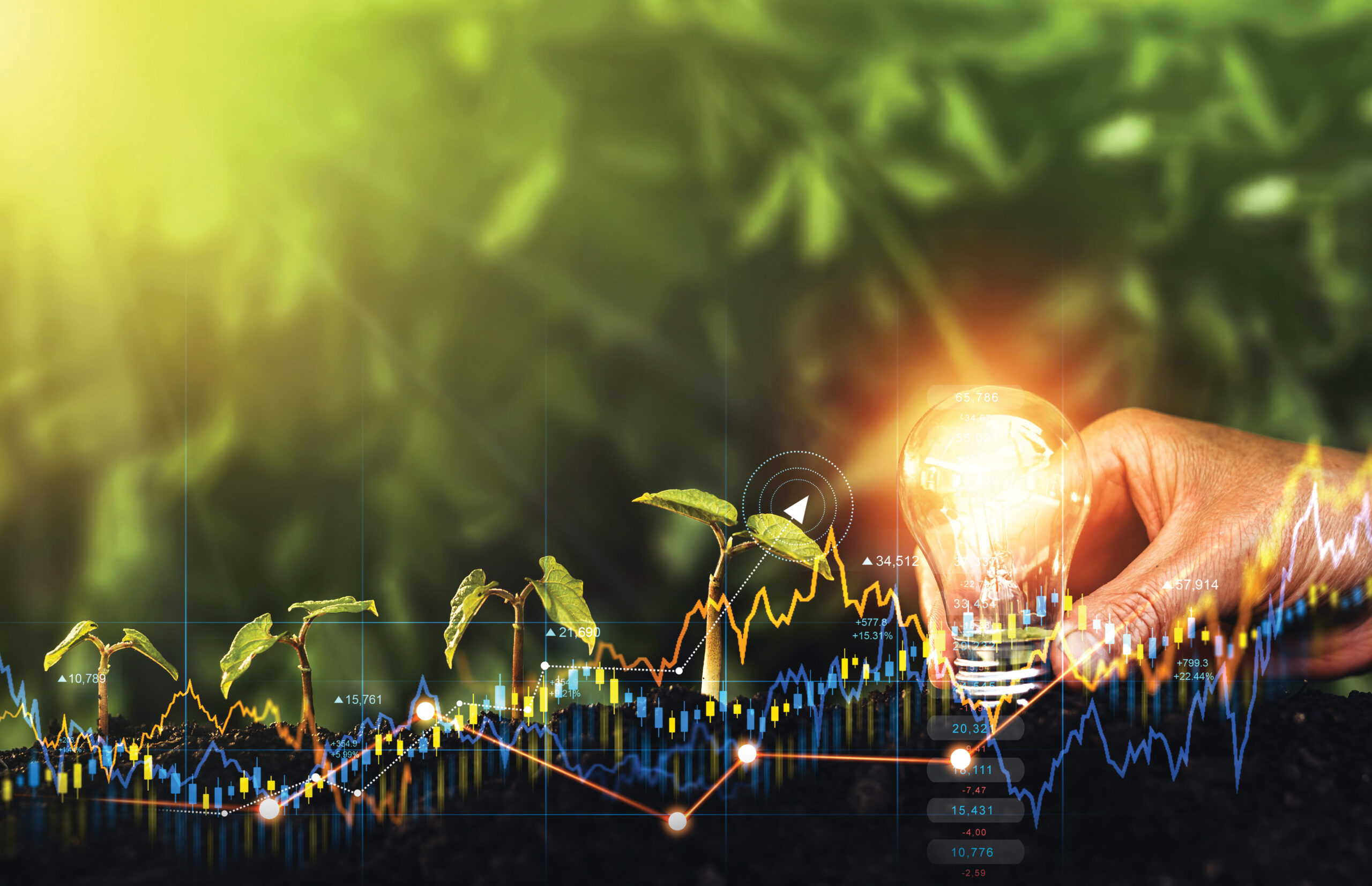

By Niklas Kuhagen, Senior Consultant, IKM GmbH, Bavaria, Germany, niklas.kuhagen@ikmarketing.de and Ilka Kuhagen, CEO, IKM GmbH, Munich, Germany, ilka.kuhagen@ikmarketing.de
The Impact and Role of “Conscious Environmentalism” on Consumers in a Complex Economic Environment
Germany has always been at the forefront of sustainability. In 2022, Germany elected the Green Party into office for the first time, showing an ongoing and even growing commitment to environmental concerns.
But in the face of significant financial pressures from inflation and rising energy costs as a fallout from the Russian war against Ukraine, the German government has been introducing programs to relieve financial pressure.
These programs are enabling Germans to do more and spend more. Doing more and spending more can lead to less sustainable consumption. How citizens have leveraged the financial relief suggests that even while Germans want to live greener, there are limits.
Some of the cost-reduction pressures have been welcomed by consumers as introducing more post-COVID fun into their lives even while encouraging greener living (e.g., traveling closer to home).
At the same time, other interventions have been ridiculed for doing too little and for the wrong demographics—and for attacking their lifestyle and quality of life. Germans want to be greener, but they also want to protect at least some of their luxuries and lifestyle.
So where lies the healthy balance between sustainable practices, a modern lifestyle, and financial relief measures?
This article provides insight into the everyday struggles of local citizens trying to navigate sustainability commitments alongside lifestyle preferences. We also address where government programs have been more effective in encouraging more sustainable ways of living. Ultimately, we argue that introducing effective economic programs to relieve financial pressure and encourage sustainability depends on intimately understanding opportunities and boundaries.
The Data behind This Article: Leveraging a Long-Term Online Community
When COVID-19 hit the world, IKM created an online community with 30 German consumers, motivated by the researchers’ desire to understand how people were getting through the difficult times. But other unusual times followed, so the community is still in place.
Today, the community discusses a variety of topics and their impact on their lives, including the war in Ukraine, energy and water shortages, increased inflation, and climate change, which is even more visible to the people in Germany.
Over the course of two years, these 30 participants have discussed how their lifestyle and decision-making have been changing in this context. It is from these discussions that we have come to understand how government interventions can support sustainability while relieving economic pressure and how interventions can fall short on the sustainability front.
The Driving Force behind Consumer-Based Sustainability Initiatives
Several main forces drive consumers’ decision-making when it comes to sustainability.
Cost pressures (brought on by war, inflation, and weather phenomena resulting in rising electricity prices) coupled with access to government relief subsidies are factors in consumers’ decision-making. But so too, consumers’ authentic environmental concerns sustained by social and cultural influences are major drivers in consumers’ decision-making.
The lockdown opened people’s eyes to how everyday decisions affect the environment, which in turn, impacts humans and wildlife.
One person in the community acknowledged, “A complete change of my attitude in the last year has not happened. Nevertheless, I became aware during the lockdown of how much our environment is polluted by airplanes and the like. I was shocked by the pictures in Venice where all of a sudden dolphins came back, and the water was clean.”
Platforms like Netflix are committed to educating the public through documentaries exposing the dangers of many popular, yet devastating, industry practices, prompting consumers to get involved in their own lives.
One participant expressed the influence of one such program called Seaspiracy, “Unfortunately, I love eating fish or shrimp. But since the movie, I’ve given up fish—even for sushi.”
Yet, while some consumers are happy to make conciliatory changes with the “common good” in mind, others are burnt out and no longer want to give up quality of life in the quest for sustainability.
Barriers to Sustainability Behaviors
Germans are feeling stretched thin by their sustainability efforts. They are fed up with the constant need to “give up” their standard of living to meet the ever-changing status quo. Consumers feel they already gave up a lot and are getting protective of maintaining their lifestyle, including luxuries they are accustomed to.
In terms of energy conservation methods, for example, many are already using energy-saving lightbulbs, green energy where available, water and electricity conservation methods, and more. There is not much more they feel they could do without sacrificing personal luxuries.
The definition of personal luxuries has shifted greatly, too, and can be different from person to person. Being able to waste energy on a pond filter or plastic on coffee machine capsules is a luxury some individuals do not want to sacrifice. Others want to own the car of their choice rather than a more environmentally friendly car.
Navigating Sustainability and Lifestyle
So, how are German consumers planning to preserve their daily lifestyles while still making conscious consumption choices?
With summer 2023 just around the corner, we asked community members how they expect consumer behavior will change with the decreased household energy demands that come with the warmer months (e.g., less energy spent on heating).
- Holidays will not be touched! Traveling and vacationing have become basic needs over the years and are no longer seen as a luxury. Germans prize their holidays; holidays are meant to be spent away from home, and that requires travel.
- In the drive toward sustainability, however, there might be a move from traveling by car or plane to traveling by train.
- Talking about cars, there is an obvious uncertainty toward e-cars due to limited docking stations and miles-per-charge. Consumers are, however, open to cycling more to reduce emissions.
- A shift toward purchasing local and regional products is an easy way to cut down costs while lowering energy consumption (by minimizing transportation). This is a consumption-conscious choice consumers are willing and excited to embrace. Lower energy bills are expected to open the door to more disposable income, which will allow for increased consumption of goods and services. Not only will this help the local economy, but it will have a direct impact on morale.
- German consumers believe that summer is the perfect time to begin home and garden renovations, with the hope of creating a more comfortable and convenient living space they can enjoy.

There is an overall sense of optimism toward the economy and everyday life, one that is long coming following an economically devastating pandemic. As we emerge from the effects of the coronavirus, people are ready and willing to jump-start the economy and get back to life as normal.
The Government Relief Package
We also had the chance to explore the acceptance and impact of the relief package already in existence.
The German government voted to allocate in January 2023 approximately €65 billion to ease energy price pressures on households (e.g., heat, transportation). This marks the third big government allocation to ease these types of costs (after the first two deployed in 2022).
In addition to helping everyday citizens, the money provides tax breaks for energy-intensive companies.
There was mixed perception on the impact of the recent government relief package.
For many community members, while the additional €300 one-time payment to every German taxpayer was welcome, it made no difference in their overall lives. Many saw it as only a drop in the ocean compared to the increased costs of inflation on their everyday purchases.
According to one participant, “The almost €300 is, of course, nice to have, but I still don’t think it’s a real help in the long run.” While some forward-planners have saved monthly since the summer of 2022 for their expected increased annual energy bill, many just used it up with their regular expenses and did not put away a portion for extra future energy costs.
Instead of a one-time relief package, consumers in the community would prefer to see reduced prices on everyday necessities like groceries.
Also, they believe monetary compensation should be linked to income, ensuring those with the lowest income receive the most assistance.
“We belong to the group that didn’t necessarily need the €300,” stated one of the contributors. “It would have been better for the government to link this bonus to income tax (like in France) so that only those who really need it get it (and then gladly more).”
While one of the main complaints across the board is that the money didn’t reach the people who needed it most, the package wasn’t a complete miss.
The government had also created a €9 monthly ticket valid for all public transportation in Germany (except high-speed trains), sponsored by the government and available for three months in the summer of 2022. Many touted this ticket as a win, especially for those who are considered noncommuters, previously without a monthly ticket.
The low-cost ticket opened the door to exploration of the nearer environment and provided an inexpensive and enjoyable activity amid rising prices. People started exploring the nearby cities, forests, natural parks, and sightseeing spots, which they neglected before.
However, the €9 monthly train ticket exposed weak points within the infrastructure, showcasing the need for more trains and wider platforms, sanitary deficiencies, and delays.
Finally, the fuel price break was far less impactful than initially expected. Some called it laughable. They said it only postponed the effect of rising prices for a short time and didn’t address the root cause of the rising fuel prices.
Besides inflation and increased energy costs, Germany also recently faced shortages never experienced by this generation.
One of the main concerns was reduced access to medication and limited subsidies for healthcare facilities. One participant stated, “I found it extreme this winter. No cough syrup, no fever juice for children. Thyroid medication or even medication for post-tumor treatment: not available.” Another wondered, “100 billion for the Bundeswehr (military), but no subsidies at all for TAFELN (feeding the poor), hospitals, and nursing homes. Something is seriously wrong here!”
While German consumers are unhappy with rising costs, they do understand the ebb and flow of the economy as a way of life and expect that it will once again let up, as voiced by one participant: “Just like in our own lives, there are times that are good and times that are worse. That’s how I look at the economy. We had many years where we were doing well. Now the situation has changed.”
Conclusion
Sustainability and energy conservation remain at the forefront of the conversation, alongside the silver lining of Germans’ anticipation of normalizing prices and the return of liberties.
In Germany, as well as anywhere else in the world, developing sustainability and energy conservation programs that are effective and achievable in everyday life highly depends on understanding the consumer mindset.
Such programs need to consider the growing tension between people wanting to make conscious, sustainable choices but having limitations with respect to what they are willing to concede. It is, for example, important to know what those inflection points are, those sensitive topics (like holidays) where applying pressure to give up more might result in alienating consumers, thereby losing their buy-in and motivation.
Yet, there is also a lack of awareness on how and where to save even more resources. The same inflection points can indicate sweet spots, opportunities to get more buy-in, by developing creative, easy solutions and measures that help people act sustainably without feeling they are giving up on their current standard of living.
With more insight into consumer practices, it is only a matter of time until the perfect marriage between sustainability, conservation, and life enjoyment is achieved, opening doors to a healthier and more prosperous planet for all.
It will take a common effort from all involved—consumer and government alike—to make noticeable changes. Consumers are aware of this and are willing to do their part, with one participant stating: “Globally, I have to make my contribution to getting this problem under control. This is only possible if we all pull together.”




